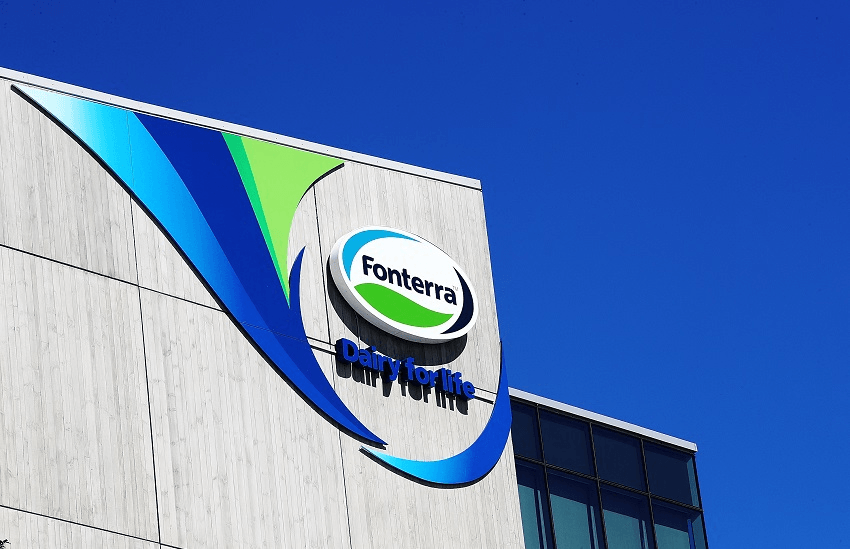Milk is practically white gold, right? Turns out not so much, with Fonterra announcing a huge loss for the year. Business editor Maria Slade explains why our biggest dairy company has lost so much money.
Has our largest company really made its first ever loss?
Yes. Fonterra Co-operative Group has announced a $196 million loss for the year to July 31, 2018. This figure is its bottom line after all the bills have been paid, and is called net profit after tax (NPAT). Only in this case, it’s a loss. Last year, Fonterra’s NPAT was a profit of $745 million. So this is a stunning reversal in fortunes, and the first time the co-operative has made a loss in its 17-year existence.
Hang on – isn’t dairy one of our most successful industries and our biggest export earner?
That’s true. Fonterra is huge – its products account for more than a quarter of total New Zealand merchandise exports (stuff we sell overseas), and 7% of our total economy. And the fact of the matter is Fonterra still earns a lot of money. In 2018 it brought in $20.4 billion from selling its wares, 6% more than in 2017. Its earnings before interest and tax (EBIT, or what it earned after all the bills except interest and tax were paid) was $902m – however, that was down 22% on last year.
So how does a big successful dairy company go from a $745 million profit to a $196 million loss?
There are two main reasons for this massive turnaround. One is that in November, Fonterra was ordered to pay $232 million to the French food company Danone as a result of legal action over a contamination scare. In 2013, Danone had to recall some of its infant formula made from Fonterra products when the New Zealand company said there was a risk of bacteria that could cause botulism. It turned out to be a false alarm.
The second is that Fonterra has had to write down $439 million on its investment in the Chinese infant formula company Beingmate. In 2015, Fonterra bought an 18.8% stake in Beingmate for around $750 million. Since then, Beingmate’s share price has plummeted, and Fonterra’s stake is now worth over $400 million less than it paid for it. This drop in value has to be taken into account, and that has affected this year’s result.
Are there other reasons for the bad result?
Yes, the company says there are a few other factors. One is that it increased the forecast Farmgate Milk Price late in the season. This is the amount it will pay to farmers for their milk. It may sound counterintuitive, but a higher milk price is a cost to Fonterra as an organisation because it means it has to pay more for the raw ingredient that goes into its dairy products.
Secondly, it says it had been a bit too optimistic in its forecasts for the business. On top of that, butter prices have been really high which affects the amount it sells and its profit margin. Lastly, it didn’t get the earnings it was expecting in some parts of the business to offset a higher spend on its operations.
How does this affect farmers?
Fonterra is not actually a company but a co-operative that is owned by its farmers. The farmers get paid in two ways – the Farmgate Milk Price they receive for each kilogram of milk solids (kgMS) they supply, and a dividend they earn for each share they own in the co-operative. The final Farmgate Milk Price for 2018 is $6.69 per kgMS which is lower than they were originally going to get but is still relatively healthy, so they’re okay there. But because of this year’s loss, the dividend has been restricted to 10 cents per share and that was paid in the first part of the year. Last year, the total dividend payout was 40 cents, so that’s quite a drop.
Is the loss a surprise?
Not really. The Danone and Beingmate sagas are well known, and in March, the company announced a half-year loss of $348 million. In August, it lowered the Farmgate Milk Price and warned that the total dividend was likely to be just the 10 cents per share already paid out.
Should we be worried?
Probably a bit. Because of Fonterra’s enormous size, any reduced payout to farmers has a flow-on effect to the whole economy. Many commentators say it’s a concern that the co-operative’s earnings (the aforementioned EBIT) have dropped for two years in a row. The price of units in the Fonterra Shareholders’ Fund – the bit of the organisation that allows people who aren’t farmers to invest – has fallen from $5.50 when they were first listed on the stock exchange in 2012 to $4.96 today, so there are some grumpy unit holders. The CEO himself, Miles Hurrell, says Fonterra’s current performance is not good enough and he’s announced a plan to lift its game. This includes re-evaluating all its investments, major assets and partnerships; going back to basics on parts of the business that aren’t performing; and getting a bit better at forecasting. So watch this space.
